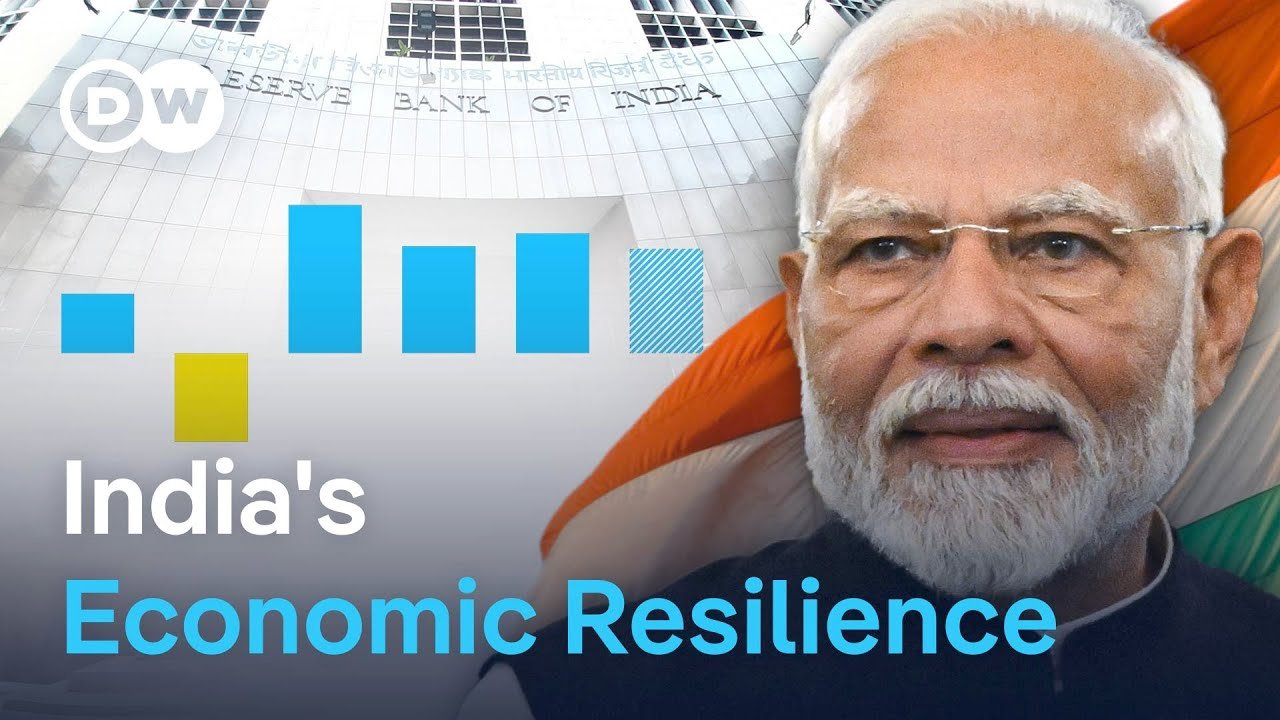Despite recent market dips and investor sell-offs, India’s economic fundamentals remain strong, with projected growth still leading among major economies. Economist Amitendu Palit sheds light on why it’s essential to look beyond the headlines and focus on the country’s long-term growth potential.
Subscribe:
For more news go to:
Follow DW on social media:
►Facebook:
►Twitter:
►Instagram:
►Twitch:
Für Videos in deutscher Sprache besuchen Sie:
#India #Modi #Economy
source

Export and inport both should as little as possible.
Foreign dependency should be less
Dw should worry about Germany and it's died economy. India will soon take over Germany and be the third most powerful nation.
Indian Economy
The English language is the reason for the growth of the Indian economy over the last 30 years.
The English language is, 'The Goose that lays the golden eggs'.
Cultural Differences Around The World
European Aspirations — Pension Fund
Chinese Aspirations — Own Their Own Home
Indian Aspirations — Blue Eyes
Indian Airport — Blue Eyed Passengers Arrive
Indian passengers lift them onto their shoulders and carry them around the airport.
Aryans arrive by chariot.
Aryans arrive by plane.
Blue eyed Aryans return to India.
R1a1a Z93 Indian Cline Migration
Indo European Languages
Lithuanian and Sanskrit languages are almost identical.
Vedas — Lithuania is the frozen north.
Blue eyed Gods?
Copy, copy, and copy. It is learning processes and homework abilities of indians. Education of technical colleges are important roles.
The most unbalanced nation on earth when comes to Money talk: India. The disparity is so vast that no one outside India could believe. This is the worst Kind of brutal Capitalism.
India is home to 1.4 billion people but around a billion lack money to spend on any discretionary goods or services, a new report estimates.
The country's consuming class, effectively the potential market for start-ups or business owners, is only about as big as Mexico, 130-140 million people, according to the report from Blume Ventures, a venture capital firm.
If this trend sustains then Indian economy will be doomed.
Is to improve their own national state of cities to be like Singapore or Japan but it may take some years for them to achieve unless if their own futuristic vision may take into fruition from similarly to their rivals.
The COVID-19 stagnate us. But doing nothing seem the best
India must bargain for veto power
Epic smell of burnol
Adani stock is likely to tank this year, it will take the entire market down and may be the current govt. 2025 looks grim for India.
India's GDP per capita in purchasing power parity (PPP) in 2022 was $9,172. In 2024, India's PPP-adjusted GDP is estimated to be $16 trillion, making it the third largest economy in the world by this metric.
Indian households are estimated to hold around 27,000 tonnes of gold… India's gold reserves, managed by the Reserve Bank of India, total 854.73 metric tonnes (942 tonnes), and US gold reserve is 8133 metric tonnes (8965 tonnes)..
(According to a report by the World Gold Council, Indian women collectively own around 25,000 tons of gold, representing 11% of the world's total gold reserves in the form of jewelry. In fact, the amount of gold Indian women wear is greater than the total gold reserves of the top 5 countries.)
I have two cars (Renault Duster, Suzuki Wagen R) and four bikes (Royal Enfield Bullet, Suzuki Access, Yamaha FZ, and Bajaj CT110) in my house. We have 2 acres of land and a 2000 sq ft house. We have 680 grams of gold in our house. But we are still below the poverty line according to Indian records. The government still gives us rice and wheat for free. The middle income group like us is more in India. Here we have 1kg of rice for ₹40, which is $0.5. A chapel costs ₹150, which is $1.9. The cost here is very low. Don't measure India by nominal GDP, we don't use dollars here. When we measure India by per capita income, this is not taken into account anywhere, if the income here is low, the cost is also low… I am from the state of Kerala.. Here education, health care and water are all free.. Apart from this, some states provide electricity and free transportation charge in public transport corporation to ladies.. Is it like this in your country..? Don't underestimate India..❤️
Narmodgiindinhimane
No point in just predicting India’s growth without looking at what is happening on the ground. We need data on money supply, inflation, structural reform bills status, private investment growth, government efficiency, urban development, urban jobs etc. You need to discuss on ground, high frequency indicators to figure out where India is headed. These talking heads do not bring in any meaningful data to the discussion.
sorry..india is 50 years behind china and its coming from an indian
Uhm, every time I see DW, I think on May 10, 1933. The day of the burning books in Germany.
Thank god DW did not took opinions from Adil Brar their own India hater journalist
Our stocks are falling because of uSA's propoganda against India but its temporary we are buying our stocks and cleaning market from adversarial countries like uS.
If Europe also grows then India growth can increase by 1% .
There is famous proverb,
"𝘞𝘩𝘢𝘵𝘦𝘷𝘦𝘳 𝘺𝘰𝘶 𝘵𝘩𝘪𝘯𝘬 𝘢𝘣𝘰𝘶𝘵 𝘐𝘯𝘥𝘪𝘢 𝘰𝘱𝘱𝘰𝘴𝘪𝘵𝘦 𝘪𝘴 𝘢𝘭𝘴𝘰 𝘵𝘳𝘶𝘦"